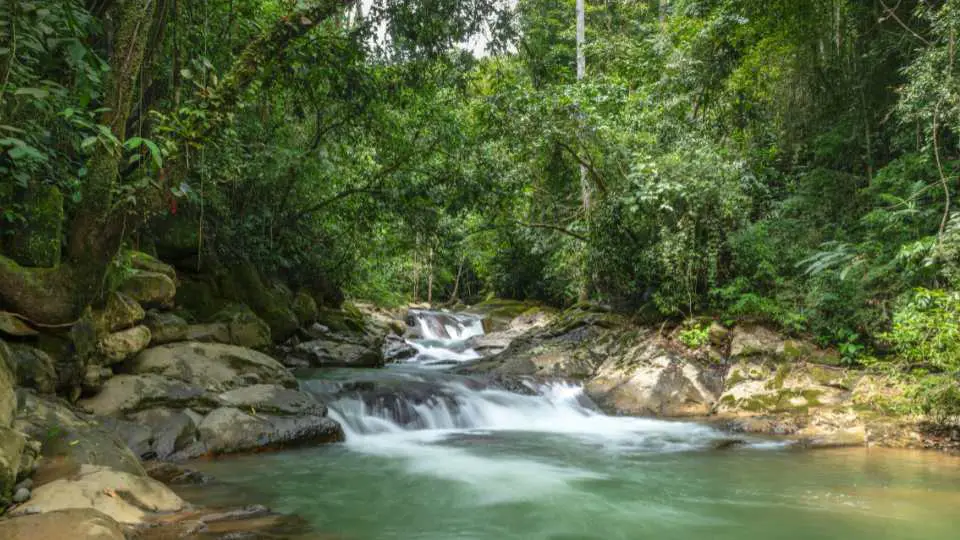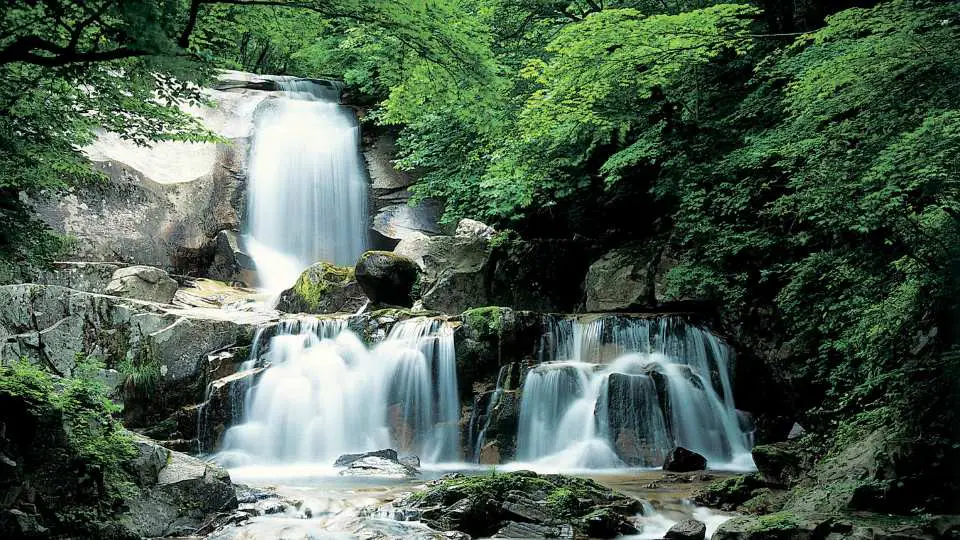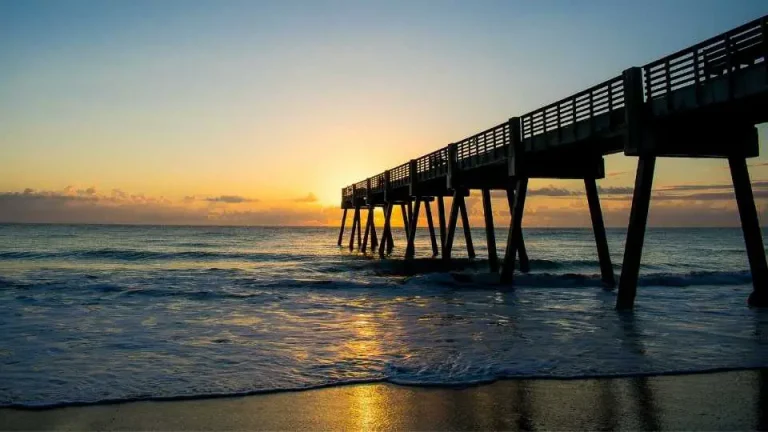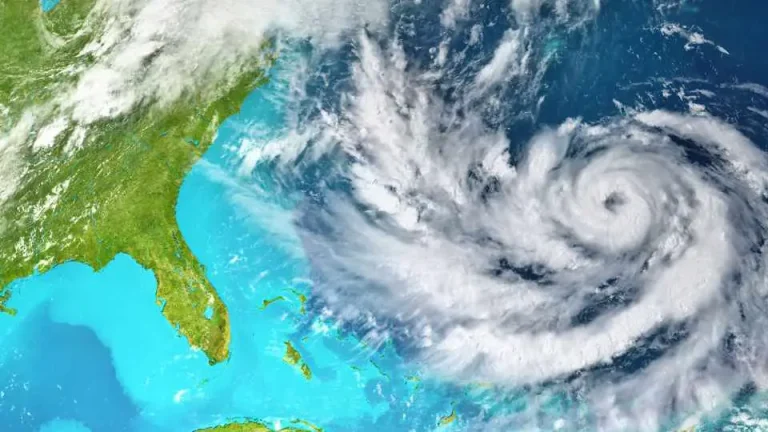Top 5 Natural Waterfalls in Florida: Hidden Gems Worth Exploring
Florida’s diverse landscape extends far beyond its famous beaches and theme parks to include remarkable natural waterfalls hidden throughout the state. These cascading waters showcase the unique geological features that define Florida’s interior regions, from limestone sinkholes to spring-fed streams.
While Florida may not be traditionally known for waterfalls, the state offers several stunning natural cascades that provide peaceful retreats and exceptional photography opportunities. From the towering drops in state parks to secluded forest waterfalls, these natural wonders demonstrate Florida’s surprising topographical diversity and offer visitors a chance to experience a different side of the Sunshine State’s natural beauty.
1) Falling Waters State Park in Chipley
Falling Waters State Park houses Florida’s tallest waterfall, standing 73 feet high. The waterfall plunges into a cylindrical sinkhole that measures 100 feet deep and 20 feet wide.
Located near Chipley in the Florida Panhandle, this park spans 171 acres in Washington County. The waterfall creates a unique geological feature where water disappears into the mysterious depths below.
Visitors access the waterfall via the Sinkhole Trail, a boardwalk that winds through towering trees and fern-covered terrain. The trail provides clear views of this natural wonder from multiple vantage points.
The park sits in the rolling hills of northwest Florida, far from the state’s typical coastal attractions. This location makes it an unexpected natural marvel, especially considering Florida’s generally flat topography.
The waterfall forms as a small stream flows over the edge and drops straight down into the cylindrical pit. The water’s final destination remains unknown, adding to the site’s intrigue.
Beyond the main waterfall, the park features additional sinkholes and natural formations throughout its grounds. The diverse landscape includes hiking trails, camping facilities, and picnic areas.
Falling Waters State Park attracts nature enthusiasts and travelers seeking Florida’s hidden gems. The combination of the state’s highest waterfall and unique sinkhole geology makes this destination particularly noteworthy for visitors exploring Florida’s natural attractions.
2) Falling Creek Falls in Lake City
Falling Creek Falls stands as one of Florida’s most accessible natural waterfalls, located just north of Lake City in Columbia County. The waterfall drops approximately 10-12 feet over limestone formations, creating a striking cascade in a wooded ravine setting.
Visitors can reach the falls via a short, easy trail that accommodates all skill levels and ages. The path features an accessible boardwalk system that provides excellent viewing opportunities without requiring strenuous hiking.
The waterfall displays distinctive root-beer-colored water as it plunges over the limestone ledge. Below the falls, the creek continues flowing over scattered limestone boulders, adding to the scenic appeal of this natural formation.
The site encompasses 204 acres jointly managed by the Suwannee River Water Management District and Columbia County. This collaboration ensures proper conservation while maintaining public access to the waterfall.
Falling Creek Falls offers convenient access from major transportation routes. The trailhead parking area sits on County Road 131, just north of the Highway 441 and Interstate 10 interchange.
The location provides additional amenities including picnic tables and playground facilities, making it suitable for family outings. These features complement the natural waterfall experience without overwhelming the peaceful forest setting.
The area around the falls holds historical significance as the site of early settlement activity in the region. Today, it serves as both a natural attraction and recreational destination for those exploring north Florida’s waterfall offerings.

3) Devil’s Millhopper Geological State Park in Gainesville
Devil’s Millhopper Geological State Park features a massive limestone sinkhole that creates Florida’s most unusual waterfall setting. The circular cavity measures 500 feet wide and drops 120 feet deep into the earth.
Small streams cascade down the steep limestone walls, forming ephemeral waterfalls that flow year-round. These miniature waterfalls trickle through crevices and disappear into underground channels below.
The sinkhole’s unique microclimate supports a rainforest-like environment in North Florida’s typically sandy terrain. Dense vegetation thrives along the walls, creating a lush backdrop for the flowing water.
Visitors can descend a wooden staircase that winds down into the sinkhole. The trail provides multiple viewing points to observe the waterfalls and streams from different angles.
The park became a National Natural Landmark in 1976 due to its geological significance. The formation occurred when underlying limestone collapsed, creating this natural amphitheater.
The waterfalls are most active during rainy periods but maintain flow throughout the year. The cool, humid conditions at the bottom contrast sharply with Florida’s typical climate above ground.
Located on Gainesville’s northern edge, the 64-acre park offers easy access to this geological wonder. The site has attracted curious visitors since the 1880s who come to witness this rare natural phenomenon.
4) Steinhatchee Falls – Steinhatchee
Steinhatchee Falls holds the distinction as Florida’s widest waterfall. The three-foot cascade forms where the Steinhatchee River flows over a limestone rock outcropping.
Located in the Big Bend region, the falls sit within the Steinhatchee Conservation Area. Visitors can reach the waterfall via the Steinhatchee Trail, a 3.3-mile multi-use path that begins at the trailhead on State Road 51.
The trail winds through oak hammocks, flatwoods, and forested areas before ending at the falls. The limestone formation extends north of the waterfall and has geological significance for the region.
Steinhatchee Falls offers excellent opportunities for picnicking and photography. The surrounding lush vegetation and tranquil atmosphere create a peaceful retreat for nature enthusiasts.
The site features deep waters carved into coastal limestone. A canoe launch provides access for those wanting to experience the area by boat or kayak.
Wildlife viewing opportunities abound in this conservation area. The falls and surrounding river system support diverse plant and animal life typical of North Florida’s coastal ecosystems.
The waterfall may not rival larger cascades in height, but its width and scenic setting make it a notable natural attraction. The gentle sounds of rushing water enhance the serene environment.
Steinhatchee Falls Park provides visitor amenities and serves as the endpoint for the hiking trail. The combination of accessible trails and natural beauty makes this waterfall a popular destination for outdoor recreation.
5) Econfina Falls – Econfina Creek
Econfina Falls cascades where a side creek meets Econfina Creek in Northwest Florida. This waterfall stands as one of Florida’s rare natural waterfalls, flowing over limestone bluffs into the clear waters below.
The falls sit along the Florida National Scenic Trail near Panama City. Hikers can access this scenic spot through the Econfina Creek section of the trail system.
The waterfall forms when water tumbles over the bluff from the opposite side of the creek. It creates a picturesque scene against the backdrop of Florida’s unique creek gorge terrain.
Econfina Creek flows through rolling hillsides and pine forests north of Panama City. The area features cold, clear natural springs that feed into the creek system throughout the region.
Visitors often combine hiking with other outdoor activities in this area. The creek’s clear waters and natural springs make it popular for paddling adventures as well as waterfall viewing.
The terrain around Econfina Falls differs significantly from typical Florida landscapes. Hikers traverse ravines and bluffs that create an almost mountain-like experience in the Sunshine State.
Access to the falls requires hiking along the Florida Trail from Scott Road. The trail winds through diverse ecosystems before reaching the creek’s edge where the waterfall can be viewed.
The falls represent part of Econfina Creek’s natural spring system. Multiple springs throughout the area contribute to the creek’s consistent flow and the formation of this scenic waterfall.
Understanding Florida’s Waterfall Formations
Florida’s waterfalls form through specific geological processes involving limestone dissolution and sinkhole development. These formations create distinct characteristics that differ significantly from waterfalls in mountainous regions, with optimal viewing conditions varying based on seasonal rainfall patterns.
Geological Factors Shaping Waterfalls
Florida’s waterfalls develop through karst topography, where slightly acidic rainwater dissolves limestone bedrock over thousands of years. This process creates underground caverns and surface depressions.
Most waterfalls form when the roof of an underground cavern collapses, creating a sinkhole. Water then flows over the remaining limestone edges into these circular depressions.
The state’s relatively flat terrain means waterfalls typically result from sudden elevation changes rather than gradual slopes. Devil’s Millhopper and Falling Waters State Park exemplify this sinkhole-waterfall formation.
Key formation factors include:
- Limestone bedrock composition
- Groundwater flow patterns
- Underground cavern systems
- Surface water drainage
The Floridan Aquifer system influences waterfall locations, as springs emerge where the water table intersects the surface. These springs often create the water source for Florida’s natural waterfalls.
Unique Characteristics of Florida Waterfalls
Florida waterfalls rarely exceed 100 feet in height, with Falling Waters State Park containing the tallest at 73 feet. Most waterfalls disappear completely into sinkholes rather than forming streams at the bottom.
The circular or cylindrical shape distinguishes Florida waterfalls from cascading mountain waterfalls. Water drops vertically into limestone sinkholes, creating unique photographic opportunities.
Many waterfalls flow seasonally, depending entirely on rainfall levels. During dry periods, some waterfalls reduce to mere trickles or stop flowing entirely.
The limestone environment creates clear, mineral-rich water that often appears turquoise or emerald green. This coloration results from light refraction through dissolved minerals.
Distinctive features:
- Vertical drops into sinkholes
- Seasonal flow variations
- Limestone-filtered water clarity
- Surrounding hardwood hammock vegetation
Best Times to Visit
Peak flow season occurs from June through September during Florida’s wet season. Afternoon thunderstorms replenish groundwater levels, ensuring consistent waterfall flow.
Winter months from December through February offer comfortable temperatures but reduced water flow. Many waterfalls become intermittent during this drier period.
Optimal visiting conditions:
- Morning hours: Cooler temperatures, better lighting
- After rain events: Maximum water flow
- Weekdays: Fewer crowds at popular locations
Spring visits in March and April provide moderate temperatures with adequate water levels from winter rains. Fall months offer pleasant weather but variable flow depending on summer rainfall totals.
Photographers benefit from visiting after significant rain events when water flow reaches maximum volume and mist creates atmospheric effects around the falls.






